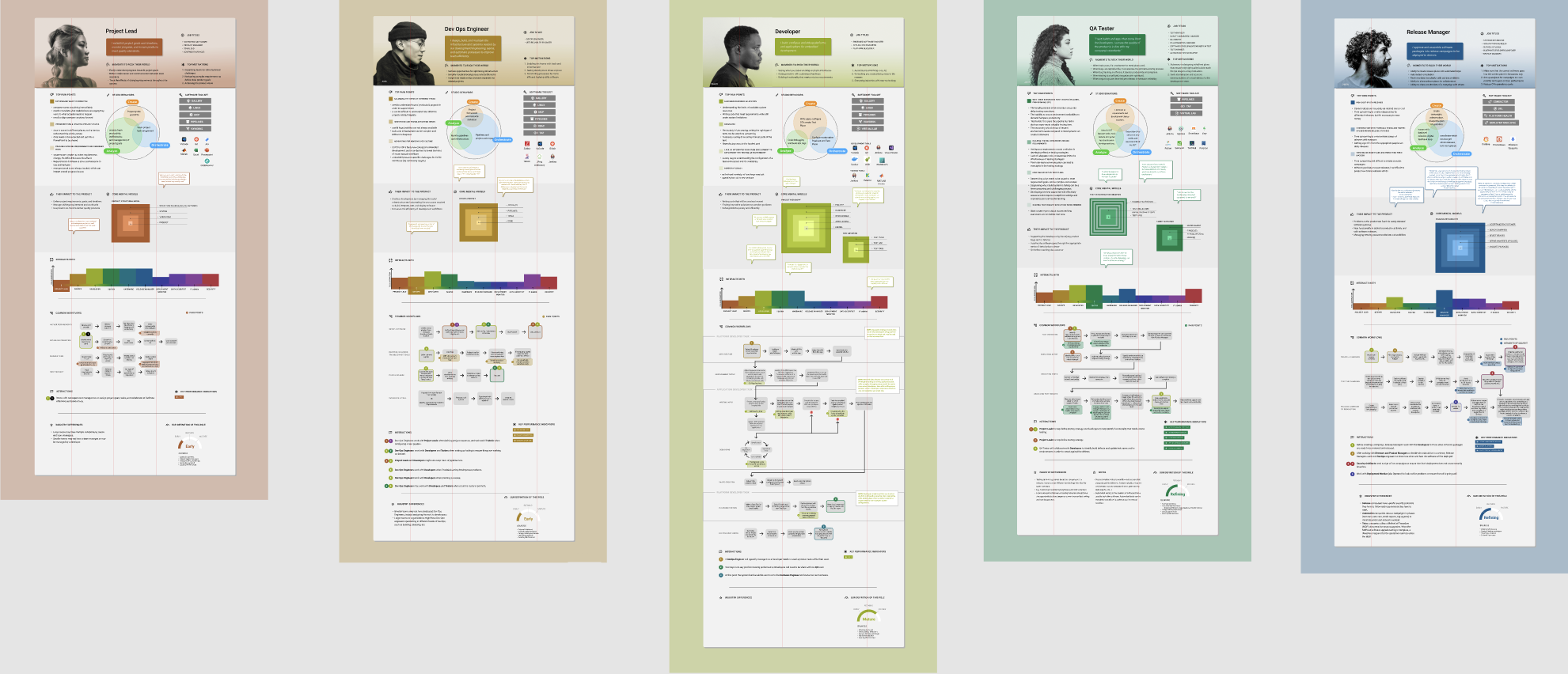User-Centered Transformation
How we established UX as a core competency in an engineering-led organization

Understanding our Users
In order to craft a coherent product strategy and create successful designs, we needed a clearer picture of who the Wind River Studio products are for and what problems they needed to solve. And, we would need a way to communicate that to the entire organization. So, we set about creating a set of user personas for each user role relevant to Studio.
Process
- Interviews with users across 12 user roles, supplemented with secondary research
- Analysis of user tasks, pain points, motivations, tools, collaborations, and desires
- Synthesize key data points in detailed posters and snack size slides
- Validate with internal subject matter experts
- Socialize across the organization
My Role
- Comprehend current status of existing personas to figure out our starting point
- Create project plan to communicate to get buy-in from stakeholders and senior leaders
- Resource allocation, project planning, and research / design direction
- Results presentations and document socialization
Team's Role
- Coordinate and conduct formative interviews with 60+ users, perform secondary research
- Data analysis and reporting
- Persona poster design
Outcome
- Product, engineering, marketing, and support teams now use the personas to guide their work
Design Thinking & Cross-Functional Collaboration
As a UX lead, my role is to ensure the team has a clear, data-driven understanding of our products' users, and can translate that understanding to useful, usable, desirable experiences. But I also believe that the entire organization owns the user experience, so it's important to collaborate across functional areas to ensure that we're choosing priorities, making tradeoffs, and executing strategy with our users top of mind. To facilitate that level of collaboration, we implemented design thinking processes as part of the company's release planning.
Process
- Introduce and socialize concept of design thinking to stakeholders
- Plan sessions, incorporating session inputs, defining desired outputs, wrangling schedules
- Synthesize outputs with product managers and engineering leads to make updates to backlog
- Repeat for next release
My Role
- Engage with stakeholders to generate excitement and buy-in
- Team resource allocation, project planning, and strategy direction
Team's Role
- Prep session assets
- Moderate and support primary session and breakout sessions
- Post-session data clean up and analysis
Outcome
- Cross-functional, user-centered collaboration became integrated into quarterly release planning
Amplifying User Research
We established a user research database to support ongoing, company-wide engagement with qualitative user data. Making our work transparent and accessible increases its impact and accelerates innovation.
Process
- Develop tagging strategy and apply tags to session videos
- Create thematic summary videos and artifacts
- Socialize and invite stakeholders to view and contribute
My Role
- Tool selection and overall strategy
- Research direction and oversight
- Socialization and stakeholder engagement
Team's Role
- Uploading and tagging session videos
- Creating session videos and artifacts
Outcome
- Teams across the company were able to ask and answer better questions about users